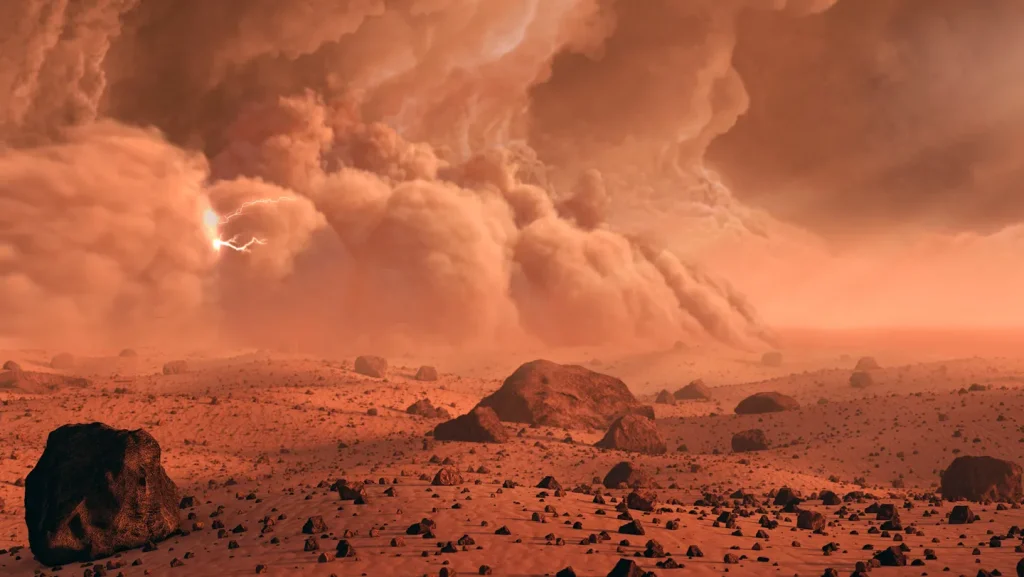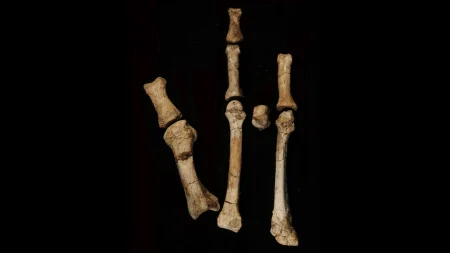Electricity Crackles in Martian Atmosphere: A First-of-its-Kind Discovery
In a groundbreaking discovery, scientists have detected electricity in the Martian atmosphere for the first time, revealing that when the wind blows across the Red Planet, it generates electrical discharges similar to static electricity on Earth. This fascinating revelation comes from research published in Nature on November 26, based on data captured by a microphone on NASA’s Perseverance rover.
The electrical discharges detected on Mars are relatively small—comparable to the static shock you might experience when touching a doorknob on a dry winter day. These miniature lightning events, described by planetary scientist Baptiste Chide of the University of Toulouse as “centimeter-scale electric arcs,” produce distinctive crack sounds and shock waves. The phenomenon occurs when dust particles in the Martian atmosphere collide or slide against each other, causing their surfaces to become electrically charged through a process known as triboelectricity—the same effect that occurs when you rub two balloons together. According to Chide and his team, these electrical discharges likely happen “en masse” along the thousands of kilometers of dust storm fronts that move across the Martian landscape.
While scientists have long suspected that triboelectricity might occur on Mars based on laboratory experiments and computer simulations, this marks the first actual detection of the phenomenon. The breakthrough came after Chide’s team had previously recorded sounds of a Martian dust devil, initially attributing a loud clicking noise to dust grains striking the microphone. After discussions with other scientists about Martian triboelectricity, Chide realized what they had captured might actually be electrical zaps. To confirm their hypothesis, the researchers simulated the electrical interference that the microphone would experience from nearby electrical discharges and found that the signatures matched perfectly with what the instrument had recorded.
Expanding their investigation, the team reviewed 28 hours of recordings taken over two Martian years and identified 55 electrical discharges that occurred within approximately two meters of the microphone. Most of these discharges were detected during the windiest periods, with sixteen specifically occurring during encounters with dust devils. By analyzing the pressure waves of these discharges, the researchers estimated that the largest ones carried about 40 millijoules of energy—comparable to the zap from an electric bug swatter. This discovery has been met with enthusiasm from other experts in the field, including electrical engineer Joshua Méndez Harper of Portland State University, who confirmed the electrical nature of the signals while raising questions about how the rover itself might have influenced the phenomenon.
The implications of this discovery extend beyond scientific curiosity to practical concerns for future Mars missions. While these electrical jolts aren’t powerful enough to be lethal to astronauts, they could potentially degrade spacesuits over time and interfere with spacecraft electronics and instruments. Perhaps more significantly, these electrical discharges might complicate the search for evidence of life on Mars. The zaps could spark reactions that generate oxidants like hydrogen peroxide, which have the potential to destroy organic molecules—the very building blocks of life that scientists are eager to find.
Looking to the future, Chide emphasizes the need for a new generation of instruments specifically designed to measure electric fields on the Martian surface. Such tools would help scientists better quantify and understand this newly discovered phenomenon. While the rock and soil samples collected by Perseverance are likely protected from electrical damage due to their storage in insulated tubes with electrostatic paint, there remains the possibility that they could have been exposed to electrical discharges before collection. This discovery opens a new chapter in our understanding of Mars’s atmospheric dynamics and highlights the complex challenges that await future exploration of the Red Planet.















